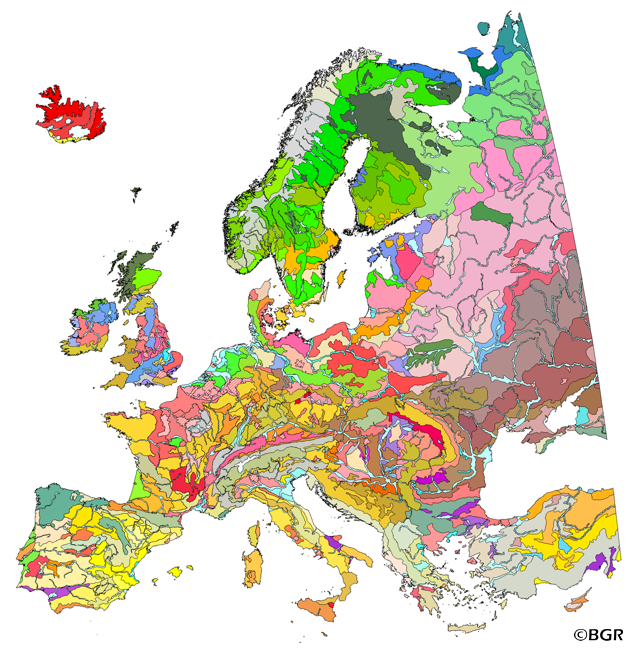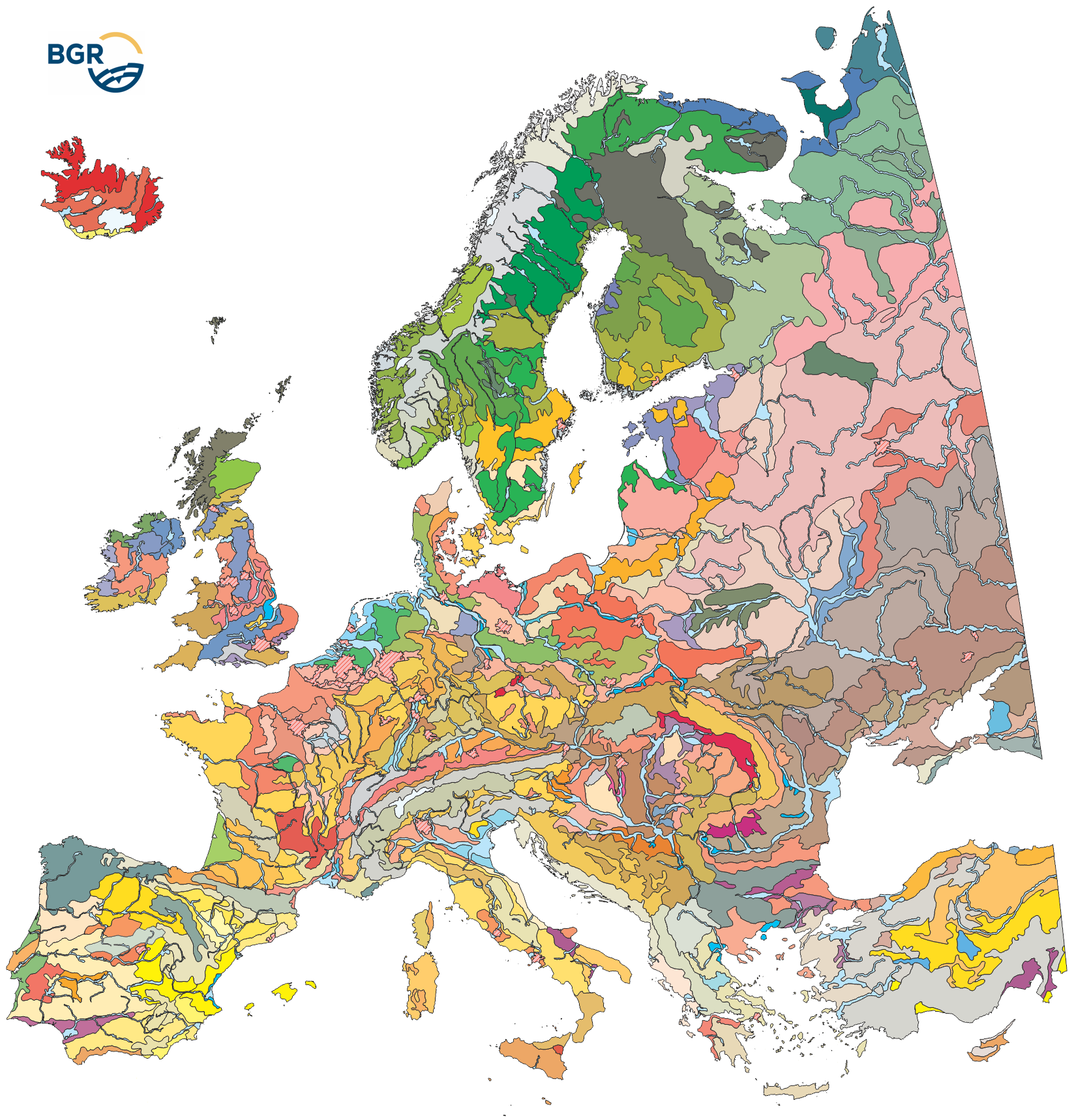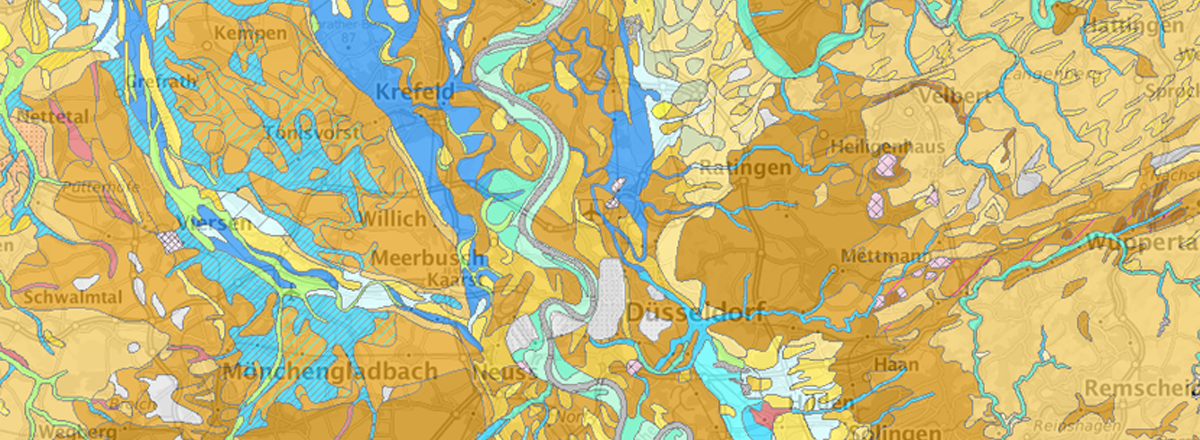Keyword
Bodenlandschaften
4 record(s)
Provided by
Type of resources
Available actions
Topics
Keywords
Contact for the resource
Service types
-

The map of the "Soil Regions of the European Union and Adjacent Countries 1:5,000,000 (Version 2.0)" is published by the Federal Institute of Geosciences and Natural Resources (BGR), in partnership with the Joint Research Center (JRC, Ispra). The soil regions map is intended to support the current national mapping activities towards a European 1:250,000 datbase by stratifying similar regional soil associations into a hierarchical concept. Only by stratification, the complexity of soils can be systematically structured so that the complex 1:250,000 legend can be handled in cross-national and contintental-level applications. Soil regions are natural, cross-regional soil geographical units which perform the highest spatial and content-based aggregation of European soils. They represent the frame conditions for soil development at the landscape level. The soil regions are presented at scale 1:5,000,000. Thus, its borders are highly generalized. Because of its low resolution, the map units absorb atypical soils and associations of soils, which are only described in higher resolution soil maps. The delineation of the soil regions is expected to be refined (and probably improved by its content) during the actual 1:250,000 mapping process. Thus, updating can be expected in the future. Currently, the soil regions map is the only graphical soil representation in Europe which has been developed using fully comparable and harmonized basic data at the continental level (climate, hydrography, relief, geology, vegetation): the interpretation of this input data, and the utilization of expert knowledge (including the interpretation of regional soil maps) has been done using one common methodology, developed and applied consistently throughout the whole mapping area by an experienced international soil mapper (Dr. Reinhard Hartwich, former member of BGR, and co-author of the 1998 Manual of Procedures). The methodology is extensively described in the Explanatory Notes (German), and in the revised Manual of Procedures which is expected to be completed soon. It is highly recommended to apply and interpret the map using the map comments and descriptions as provided in the explanatory notes (German: Hartwich et al. 2005; English: revision of the Manual of Procedures, initial version: Finke et al. 2001).
-

The map of the "Soil Regions of the European Union and Adjacent Countries 1 : 5 000 000 (Version 2.0)" is published by the Federal Institute of Geosciences and Natural Resources (BGR), in partnership with the Joint Research Center (JRC, Ispra). The soil regions map is intended to support the current national mapping activities towards a European 1:250,000 datbase by stratifying similar regional soil associations into a hierarchical concept. Only by stratification, the complexity of soils can be systematically structured so that the complex 1:250.000 legend can be handled in cross-national and contintental-level applications. Soil regions are natural, cross-regional soil geographical units which perform the highest spatial and content-based aggregation of European soils. They represent the frame conditions for soil development at the landscape level. The soil regions are presented at scale 1:5,000,000. Thus, its borders are highly generalized. Because of its low resolution, the map units absorb atypical soils and associations of soils, which are only described in higher resolution soil maps. The delineation of the soil regions is expected to be refined (and probably improved by its content) during the actual 1:250,000 mapping process. Thus, updating can be expected in the future. Currently, the soil regions map is the only graphical soil representation in Europe which has been developed using fully comparable and harmonized basic data at the continental level (climate, hydrography, relief, geology, vegetation): the interpretation of this input data, and the utilization of expert knowledge (including the interpretation of regional soil maps) has been done using one common methodology, developed and applied consistently throughout the whole mapping area by an experienced international soil mapper (Dr. Reinhard Hartwich, former member of BGR, and co-author of the 1998 Manual of Procedures). The methodology is extensively described in the Explanatory Notes (German), and in the revised Manual of Procedures which is expected to be completed soon.
-

Der WMS zeigt die Bodenlandschaften und Leitbodengesellschaften von NRW und erläutert diese in Texten. Die Karte basiert auf der überarbeiteten Bodenübersichtskarte 1 : 200 000 (BÜK200), herausgegeben von der Bundesanstalt für Geowissenschaften und Rohstoffe. Für den Niederrhein sowie das Sauer- und Siegerland sind Texte und fachliche Inhalte auszugsweise aus folgenden Veröffentlichungen des Geologischen Dienstes NRW hinterlegt: PAAS, W.; SCHALICH, J. (2005): Böden am Niederrhein - CD-ROM; Geologischer Dienst NRW ROTH, R. (2014): Böden im Sauer- und Siegerland – pdf-Datei; Geologischer Dienst NRW.
-
Der Datensatz zeigt die Bodenlandschaften und Leitbodengesellschaften von NRW und erläutert diese in Texten. Die Karte basiert auf der überarbeiteten Bodenübersichtskarte 1 : 200 000 (BÜK200), herausgegeben von der Bundesanstalt für Geowissenschaften und Rohstoffe. Für den Niederrhein sowie das Sauer- und Siegerland sind Texte und fachliche Inhalte auszugsweise aus folgenden Veröffentlichungen des Geologischen Dienstes NRW hinterlegt: PAAS, W.; SCHALICH, J. (2005): Böden am Niederrhein - CD-ROM; Geologischer Dienst NRW ROTH, R. (2014): Böden im Sauer- und Siegerland – pdf-Datei; Geologischer Dienst NRW.
 www.geodatenkatalog.de (S1L)
www.geodatenkatalog.de (S1L)